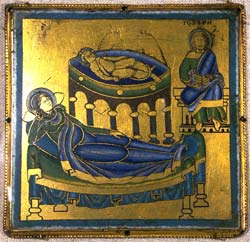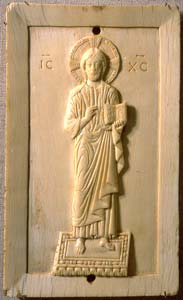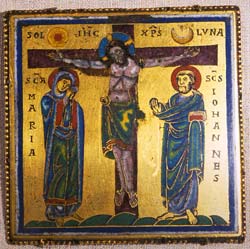| Reading:
Rubin, M., Corpus Christi, Cambridge. |
|
|
The concept of the body of Christ points to what is really the central aspect of the life of the Church in the Middle Ages -- perhaps the anchor of medieval western culture in the broadest sense -- the belief that a human body could appear to "die" only to rise again after three days and that the body has a continuing life in the central sacrament of the church -- the Eucharist -- where a small wheaten disk actually becomes the body within the context of the ritual of the liturgy -- ritual involving both words and gestures.
As you have probably discovered, the "Body of Christ" component of the database is one of the richest in the entire course provoking an attempt to find a way to organize the material in categories.
I am going to follow a method derived from medieval approaches to reading a text -- in a multi-layered sequence:
- Literal or historical
- Allegorical -- seeking the meaning of the image as a signifier
- Tropological or moralizing
- Anagogical or upward-leading. And to this category, we may add sacrementa.
|
|







